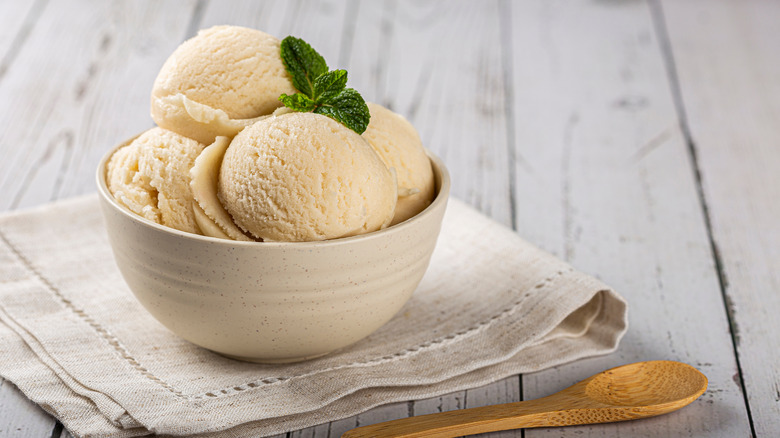How Did Vanilla Become Synonymous With Bland? Blame Ice Cream
Search the definition of "vanilla," and you'll find two meanings. The first is the literal definition: the flavor, originally derived from vanilla beans. The second is more pejorative: plain, conventional, and bland. How did this complex — and wildly popular — flavor earn such a dull reputation?
Vanilla is the most popular flavor in the world, cropping up in pastries, dairy products, candles and perfumes. We seem hardwired to enjoy it. A 2022 study published in Current Biology, which examined cross-cultural scent preferences, ranked the compound vanillin as the most popular. This was true even in remote hunter-gatherer communities, where the subjects didn't have precisely the same associations.
The ancient Aztecs paired vanilla extracted from the Vanilla planifolia orchid with chocolate. Later, Spanish explorers brought it to Europe. Queen Elizabeth loved vanilla pastries; Thomas Jefferson brought recipes for vanilla ice cream back from France in the 18th century. Despite the fact that vanilla is expensive and labor-intensive, it blossomed in popularity — and became even more readily available when scientists learned in 1874 how to synthesize vanillin, the main compound in artificial vanilla.
But vanilla's popularity garnered it a reputation for being plain, simple, and unremarkable. An article in an 1887 issue of the Fort Worth Daily Gazette illustrates an early example: in the article, a waitress who worked at a local soda fountain gave her accounts of the fountain's customers. As the waitress explained, "...the girls who come in with fellows want 'just vanilla plain' — kind of innocent and simple."
Vanilla came to mean boring
By the 1940s, the word was being used as an adjective. A 1942 Life magazine article describes "plain vanilla foreign policy," and a 1954 newspaper article described an athlete as a "plain vanilla scrub." In the 1970s, "vanilla" gained an additional association. Now, the word is used to describe an unadventurous love life — an ironic twist, considering that the Marquis de Sade used vanilla as an aphrodisiac.
The word has come to mean "safe" and "pure" even across language and culture. In 2013, budget airline AirAsia Japan rebranded as Vanilla Airlines. The name, strategists explained, was meant to evoke feelings of comfort and familiarity — and didn't have the same connotations in Japan as it did abroad.
But aside from its ubiquity, vanilla's "plain" reputation is bolstered by the nature of the flavor itself. With artificial vanilla accounting for 99% of the world's vanilla flavor, most consumers aren't familiar with vanilla's complexity. Even those who try real vanilla might not get the full effect: high temperatures destroy natural vanilla's subtle compounds, flattening the taste. Even if you don't get the full nuance of vanilla, you can still enjoy its benefits. Vanilla doesn't overwhelm other flavors, it enhances them. It softens tart or bitter flavors and heightens sweet ones. It's not only useful in sweet foods, though — it can also enhance savory ones. Rather than thinking of vanilla as boring, think of it as a clean slate, ready to become anything you want it to be.

